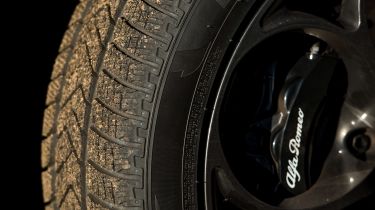How to check tyre age: are old tyres dangerous?
Driving a car on old tyres is not recommended. Here’s how to check the age of yours

Tyre age is an important factor when considering if you need to change your car’s rubber. While driving on old tyres is not technically illegal nor an MOT failure, the fact is that old tyres are far more likely to become illegal by cracking or bulging.
How do you know if your car’s tyres are old, though? And how old is old in tyre terms? The good news is that all makes and models of tyre have a built-in way to check tyre age and you don’t need to be an expert to find out exactly how old your rubber is.
Every tyre has markings on the sidewalls - the bit of rubber in between the wheel and the road. In big letters there will be the brand, then in slightly smaller letters there will be a marking such as 225/45 R18. This is the tyre’s specification - in this example it’s a tyre for an 18-inch wheel with a width of 225 and a height of 45.
The number you’re looking for will be close to that marking and will usually be circled. It’s four digits, for example 0422. The numbers are really useful as they simply tell you the month and year that the tyre was made in the factory. In our example here, the tyre will have been made in April 2022 - “04/22”.
If you buy a new set of tyres, they can be up to five years old. Tyres up to this age can still be sold as new, as long as they’re unused.
Are old tyres dangerous?
Rubber gradually dries out as it ages, which reduces the effectiveness of the tyre. It means old tyres have less grip and are at greater risk of cracking and bulging as the material is less durable. Tyres have a solution in the compound to help prevent this drying, but it’s less effective if the tyres have not been used.
Usually over a long period of time, say a decade or more, a tyre will be worn out before it becomes too old. But if a car is left sitting for long periods unused, the tyre will become more risky to drive on safely even if it has plenty of tread left.
Tyre manufacturers recommend that you change tyres at the drop of a hat. They would do - as it improves their sales figures - but don’t ignore that advice entirely. Keep an eye on your tyres once they reach more than five years old, and replace them if you see small cracks start to form in the rubber, no matter how much tread is left.
Once a tyre gets to a decade old, we’d recommend replacement it, no matter what. Tyre technology is improving all the time so at the very worst you’ll have changed to a compound and tread design that is a decade newer and the car will drive much better than before simply because of the improved rubber. Tyre companies are always improving their formulas, and fresh tyres will almost always be the safest and best-performing.
How often do you check your tyres? Let us know in the comments section below...
Find a car with the experts





